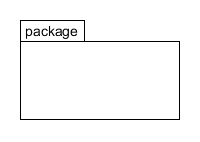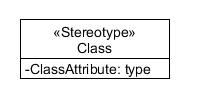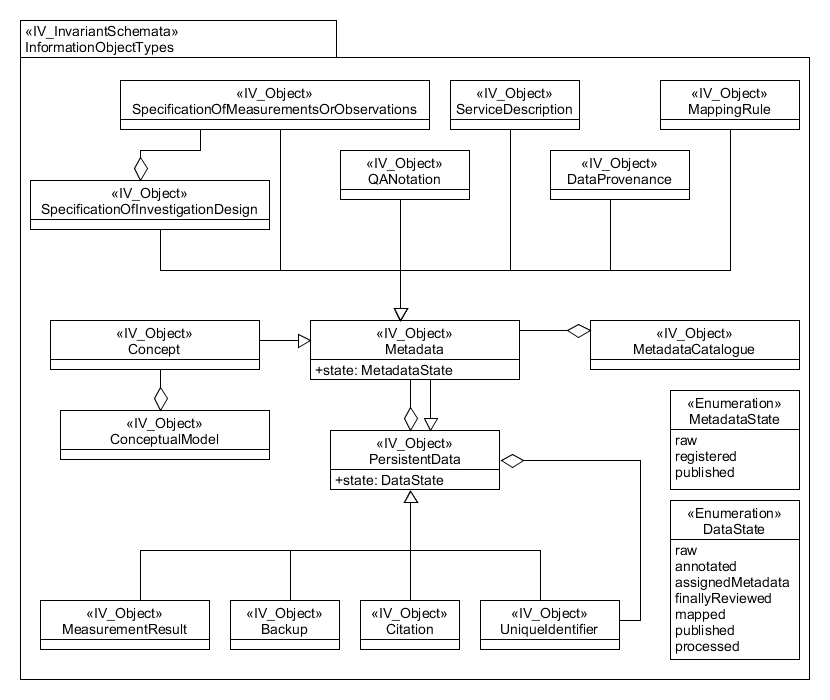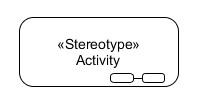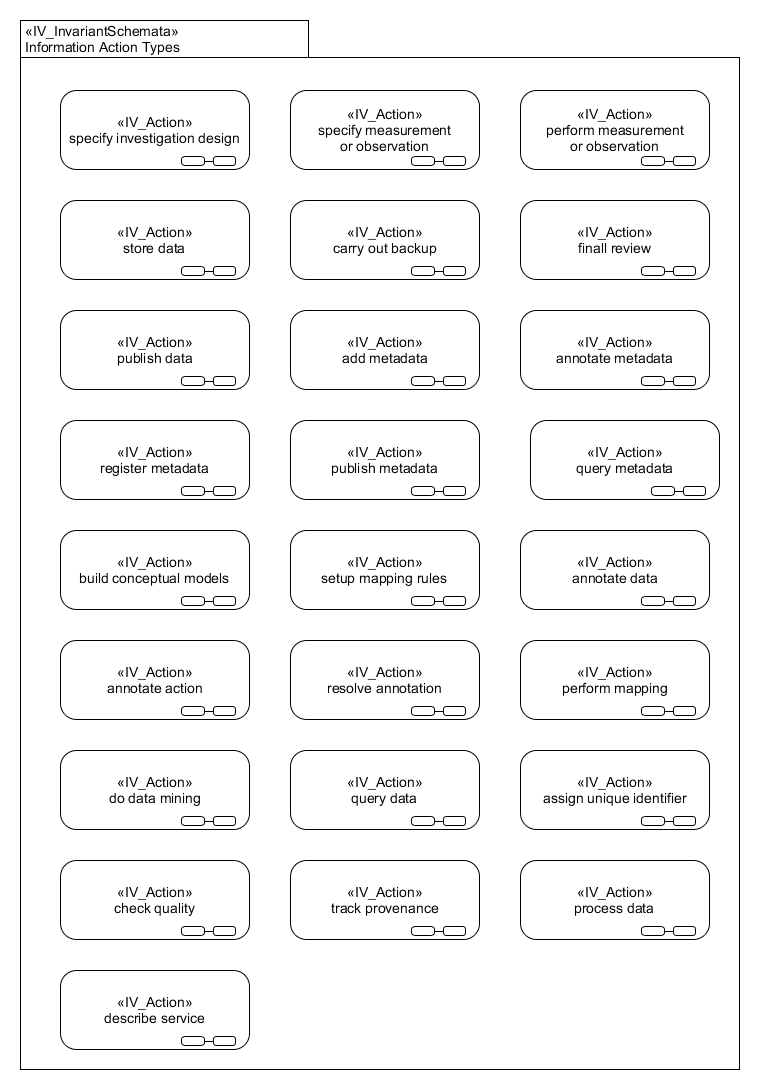Difference between revisions of "Notation of Information Viewpoint Models"
(Created page with "== <span style="color: #BBCE00">Information Objects</span> == IV Objects are represented using a class diagram. {| class="wikitable sortable" style="width: 85%;" |+ Table 4...") |
(→Information Actions) |
||
| Line 49: | Line 49: | ||
IV Actions are represented using an activity diagram with packages and activities | IV Actions are represented using an activity diagram with packages and activities | ||
| + | {| class="wikitable sortable" style="width: 85%;" | ||
| + | |+ Table 5 Notation for action type diagrams | ||
| + | |- | ||
| + | ! style="padding: 7px"| <span style="color: #BBCE00">'''Figure'''</span> | ||
| + | ! <span style="color: #BBCE00">'''Description'''</span> | ||
| + | |- | ||
| + | | style="background-color:#ffffff;"| [[File:UML_Package.png]] | ||
| + | | style="background-color:#ffffff;"| A package, in UML notation, is a grouping element. Package is used "to group elements, and to provide a namespace for the grouped elements". | ||
| + | |||
| + | A package may contain other packages, thus providing for a hierarchical organization of packages. | ||
| + | |||
| + | Classes, objects, use cases, components, nodes, node instances etc. can all be organized as packages, enabling a manageable organization of the elements of UML models. | ||
| + | |- | ||
| + | | style="background-color:#ffffff;"| [[File:UML_Activity.png]] | ||
| + | | style="background-color:#ffffff;"| Activities are used to represent action in the RM. | ||
| + | |||
| + | Name tag indicates the name of the action. Actions are named using a short phrase that describes the event or action being represented. | ||
| + | |||
| + | The small decoration in the box indicates that the action is complex and can be subdivided into smaller tasks. | ||
| + | |||
| + | A stereotype can be used to indicate the namespace where the activity is grouped. Sometimes the stereotype can be an image. The stereotype image can be used in place of the figure. For ODP, the stereotype for information action is an arrow icon with a lowercase “i”: | ||
| + | |||
| + | [[File:Information-Information-action.jpg|right]] | ||
| + | |} | ||
| + | |||
| + | [[File:IVActionTypes-2.png|none]] | ||
| + | <div style='margin-left: 250px;'>Figure 5 Example of an IV Action Types diagram</div> | ||
| + | |||
| + | In the example diagram the package represents the information action types described by the ENVRI RM. The stereotype for the package is invariant schemata, which indicates that these are the parts of the model that are stable. The RM also provides a detailed description of each action in text. | ||
| + | |||
| + | == <span style="color: #BBCE00">Information Object Instances</span> == | ||
| + | |||
| + | IV Objects instances are represented using an object diagram. The type of diagram is similar to the class diagram with the difference that the entities represented are objects not classes. Object instances have a specific state and this can change depending on the moment when the object is observed. Object instances are useful for representing the dynamic nature of the systems. | ||
[[Category:Appendix C Notation]] | [[Category:Appendix C Notation]] | ||
Revision as of 22:43, 29 March 2020
Information Objects
IV Objects are represented using a class diagram.
In the example diagram the package represents the collection of all information objects described by the ENVRI RM. The stereotype for the package is invariant schemata, which indicates that these are the parts of the model that are stable. The main objects are persistent data and metadata. The RM also provides a detailed description of each object in the text.
Information Actions
IV Actions are represented using an activity diagram with packages and activities
In the example diagram the package represents the information action types described by the ENVRI RM. The stereotype for the package is invariant schemata, which indicates that these are the parts of the model that are stable. The RM also provides a detailed description of each action in text.
Information Object Instances
IV Objects instances are represented using an object diagram. The type of diagram is similar to the class diagram with the difference that the entities represented are objects not classes. Object instances have a specific state and this can change depending on the moment when the object is observed. Object instances are useful for representing the dynamic nature of the systems.
